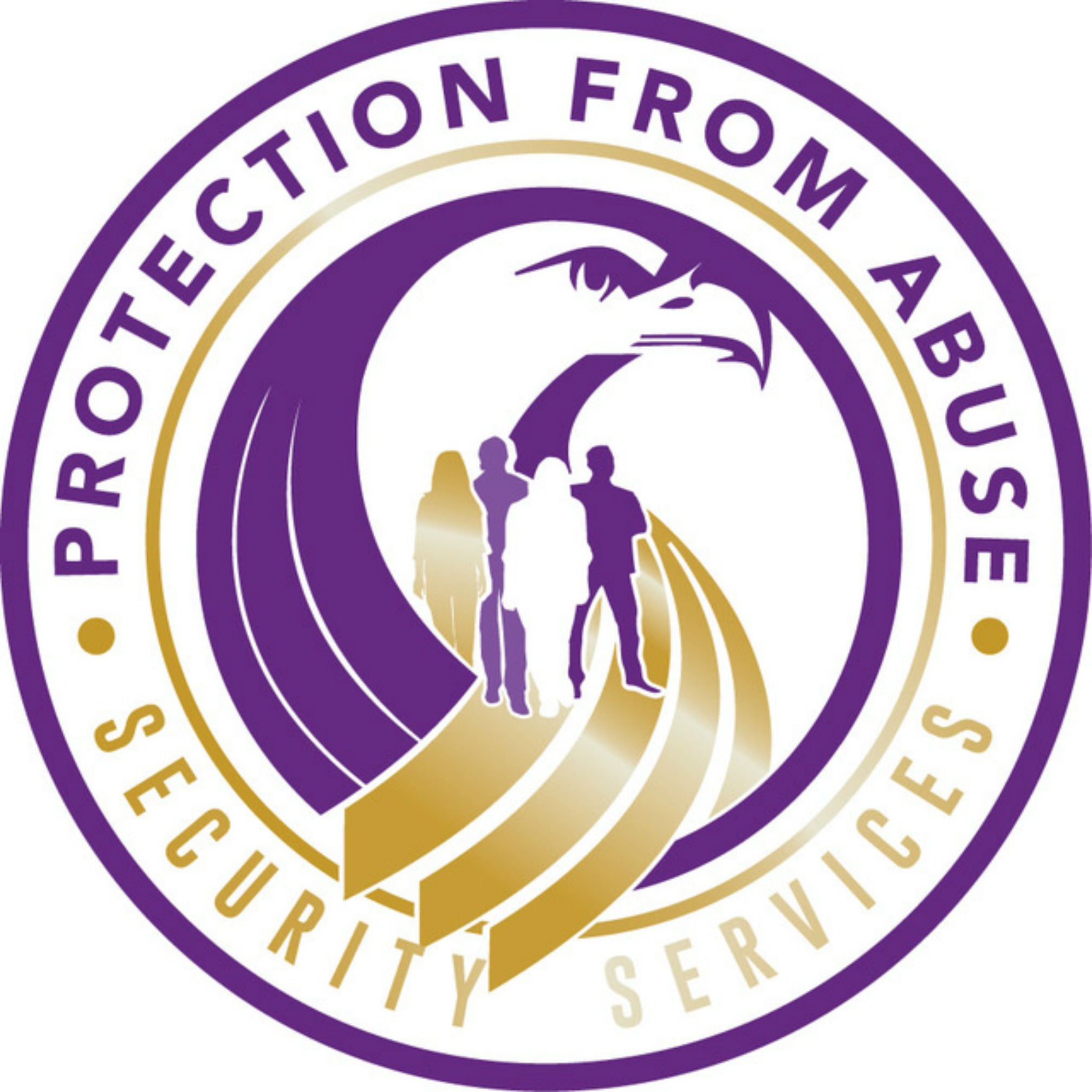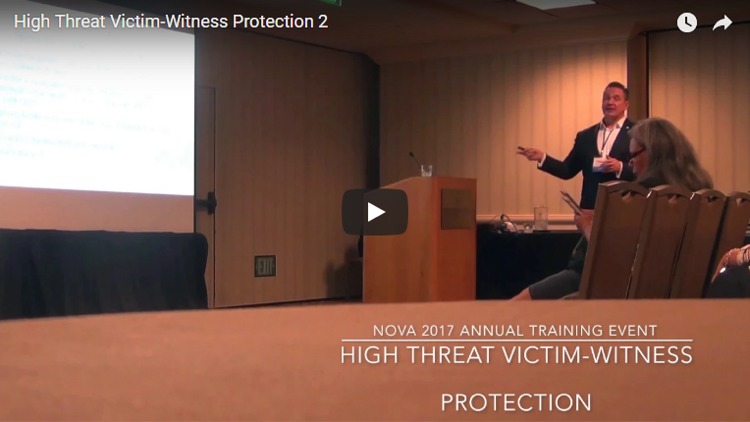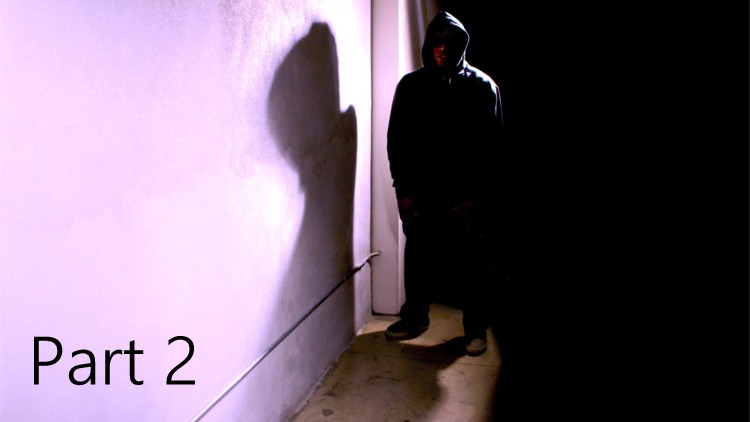Domestic Violence & Stalking, Part II – A Potentially Deadly Combination
 “I had to have my neighbors come sit in my living room just so I could take a shower. I had to change every bank account, utility account, every password, get two restraining orders, warn my coworkers, friends, and family.” – Jean, a former intimate partner stalking victim and domestic abuse survivor.
“I had to have my neighbors come sit in my living room just so I could take a shower. I had to change every bank account, utility account, every password, get two restraining orders, warn my coworkers, friends, and family.” – Jean, a former intimate partner stalking victim and domestic abuse survivor.
According to studies, over three-quarters of female stalking victims reported being stalked through technological means, often referred to as “cyber-stalking.” Cyber-stalking is generally defined as “the use of the internet, e-mail, or other electronic communications devices to stalk another person.”
According to a 2015 Pew Research Center survey, an estimated sixty-eight percent of U.S. adults own a smartphone, and other surveys peg overall cell phone ownership at ninety-one percent. Unsurprisingly, the ubiquitous cell phone is not only the most common technology used to stalk, but perhaps a victim’s greatest security vulnerability.
Unfortunately, the cell phone is often “weaponized” by a stalker and/or abuser, and consequently used to harass, spy, threaten, and otherwise terrorize their victims. Below are some of the more common methods of stalking-by-cellphone, ranging from common harassment to more difficult to detect methods:
• Calling and leaving messages
• Texting
• Sending photos and video
• Tracking via GPS
• Monitoring a victim’s cell phone via cell phone spyware
• Turning a cell phone into a listening device
• Accessing information from the victim’s cell phone
• Accessing a victim’s child’s cell phone
In this installment of our series, we will address the most common stalking activity committed with a cell phone – unwanted phone calls and texts. More than three-quarters of stalking victims report this behavior. In my experience, many victims of unwanted calls and texts believe and/or are wrongfully advised to change their cell phone number, or block the offending number. Although this strategy reflexively sounds like a good idea, it may not be the best approach.
In Part I of our Series, Domestic Violence & Stalking, A Potentially Deadly Combination, we discussed the challenges associated with successfully proving a stalking case in a court of law, and the critical importance of documenting each instance of harassing and unwanted contact. Changing your number is not only a huge inconvenience for most people, but doing so makes it impossible to document the unwanted contact.
However, there may be an even more compelling reason not to change your phone number; doing so can trigger a potentially dangerous escalation from your stalker as they seek alternative and perhaps more aggressive methods to contact you. A dangerous and persistent stalker is unlikely to abandon their unlawful behavior merely because you changed your number. This is particularly true of the “rejected stalker” often associated with former intimate partner relationships that we discussed in Part I.
Instead, one commonly suggested strategy, sometimes referred to as the “pressure valve strategy,” is to reduce your cell phone plan to minimum service, and simply allow all calls to go to voicemail. Then secure either a donated cell phone from a domestic violence organization, or purchase a cheap prepaid phone. This approach permits the continued documentation of the unwanted contact while providing you with a secure alternative means of communication.
It is critical you make absolutely certain your new number is private and unpublished, and is provided to trusted friends and relatives only. I cannot emphasize “trusted” friends and relatives strongly enough. It is not uncommon to have shared friends with our prior intimate partners, and abusers are often master manipulators at gaining information from your friends, family, or coworkers. In addition, do not provide your new phone number to any other person, or company. Anyone needing to reach you that does not have your new private number can still reach you and leave a message on your known number.
Even if you cannot acquire an alternate phone, the preferred strategy in my opinion is to keep your number, and do not block your abuser. The benefit of being able to document harassment and potential threats, as well as your ability to monitor any escalation in concerning behavior by your abuser, outweighs any potential inconvenience. Remember, intimate partner stalking is associated with poor outcomes, and can turn dangerous or deadly. Monitoring the unwanted contact may be yours and law enforcement’s only means to evaluate potentially dangerous threats to your safety. Remember, a committed and potentially dangerous “rejected stalker” is unlikely to abandon his efforts to contact or harass you simply because you changed your number, or blocked theirs.
Next, establish a password and/or change existing passwords on your cell phone accounts (including any land lines). Inform your cell phone service provider in writing that your account information is not to be disclosed or discussed with anyone (including yourself) unless the correct password is provided. Make sure your password is unique, and not something known, or that could be guessed by your former intimate partner.
Using a new phone while allowing your old phone to simply take messages (while documenting unwanted contact) also makes it much easier for you to comply with any existing “no contact” order. I have seen many domestic violence victims lose their court ordered protection due to continued and/or apparently consensual telephone contact with their abuser. Further, any contact with an abuser often proves to be emotionally traumatizing at a time when you are most vulnerable to manipulation, and is rarely productive. From false promises by your abuser that they will “change” to threats of violence or coercion, you should have zero contact with a former abuser if possible – especially if you have a no contact, or restraining order. If you must have contact with a former abuser because of court ordered visitation, request that all such contact occur strictly on one of the many family apps available, such as Our Family Wizard.
Another common tactic employed by stalkers is to “spoof” their number. Spoofing is an internet program that allows a person to alter their cell phone number. Spoofing programs may also allow a caller to change their voice. Accordingly, I recommend that you not answer calls from numbers you do not recognize. Simply allow all unrecognized calls to go to voicemail. Note the time and date of the call, and the phone number and/or name displayed on your caller ID. If a message is left, save the message. If the message breaks a no-contact order, or is otherwise harassing or threatening, report it to the authorities.
If you are in an abusive relationship, or are being stalked by a current or former intimate partner, help is available. Contact PROTECTION FROM ABUSE to take advantage of our free Domestic Violence Threat and Lethality Assessment Program. Together, we will evaluate the relative danger of your particular situation, discuss safety planning, and help connect you to local resources. Email us at: [email protected] for more information.
In our next installment of this series, we will discuss some of the services from your phone company that may be useful to combat stalking.
©2017 Steven J. Dana, All Rights Reserved









RECENT COMMENTS